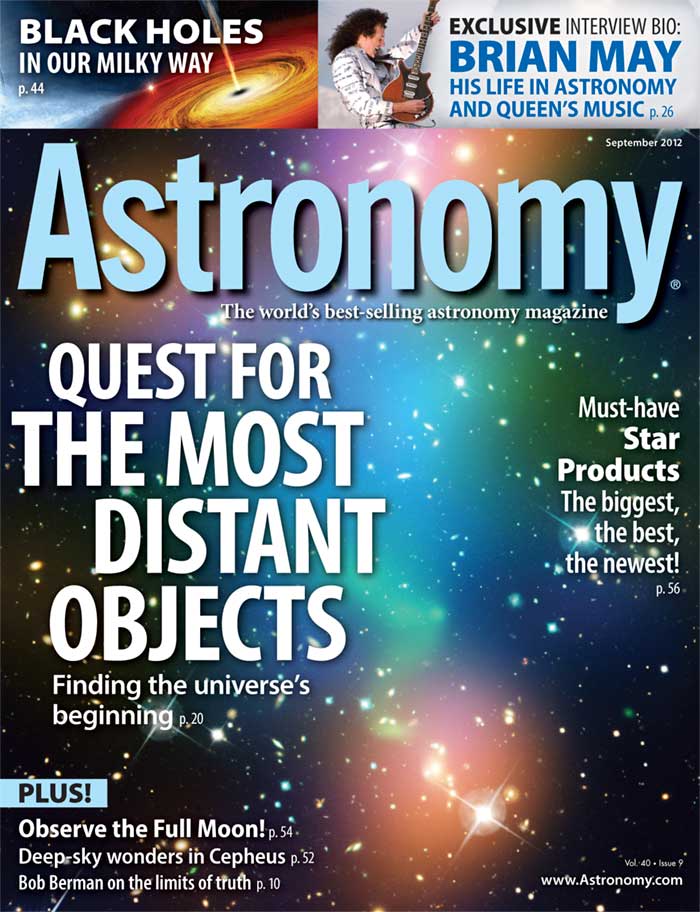
WAUKESHA, Wis. — It’s one of the oldest questions there are: How did the universe begin? While scientists can develop an ever-clearer picture of the unimaginable turmoil and growth of the cosmos since the Big Bang, many details remain elusive. But with the current generation of telescopes peering ever-further back in time, astronomers are seeing and learning more than ever before about the universe’s past.
Adam Frank takes readers on a “Quest for the most distant objects,” outlining the past triumphs in this search and underlining its importance. “Galaxies that lie 1 million light-years distant appear to earthbound observers as they existed 1 million years in the past,” he writes. “To look out into space is to see back into different epochs of cosmic history. Look back far enough, and you could glimpse the beginning.” It may just be a matter of time before astronomers can finally observe the seminal moment when primordial gas first gave way to stars and galaxies.
Scientists’ for the earliest objects has spanned more than four decades and made impressive strides. The technology available to present-day and future astronomers will only improve this view of the past, perhaps allowing them to answer some of the most fundamental questions in the universe — but probably not without raising even more questions.
Pick up the September issue of Astronomy, on newsstands July 31, to learn more about these ancient objects and how astronomers study them.
“Brian May: A life in science and music”
In addition to being a member of the rock band Queen, Brian May is a Ph.D. astronomer, science popularizer, stereophotography enthusiast, and much more. In “Brian May: A life in science and music,” Editor David J. Eicher paints a vivid portrait of the initially shy but brilliant British youth who built his own guitar and would become one of the world’s most famous rockers. Equal parts exclusive interview, profile, and biography, this is a story astronomy and music fans alike should be sure not to miss.
“Wander the wonders of the King’s constellation”
In “Wander the wonders of the King’s constellation,” Senior Editor Michael E. Bakich creates a road map of 25 of his personal favorite targets in Cepheus the King. “Because the Milky Way passes through much — but not all — of this star pattern, you’ll find a wide variety of deep-sky objects here,” he writes. Search them out, and perhaps some of his favorites will become yours.
“Astronomy’s third annual Star Products”
For the third year in a row, Contributing Editor Phil Harrington presents 35 products that “represent the best and most innovative pieces of astro-equipment to come along in recent memory.” The diverse collection of “Astronomy’s third annual Star Products” includes telescopes, domes, software, cameras, and more, so there’s sure to be something for everyone to marvel over.
September night-sky events visible without optical aid
- September 8 — The Moon passes 0.6º south of Jupiter.
- September 9/10 — The Epsilon Perseid meteor shower peaks.
- September 12 — The Moon passes 4º south of Venus.
- September 18 – The Moon passes 5º south of Saturn.
- September 19 — The Moon passes 0.2º south of Mars.
Also in the September 2012 Astronomy
- “Black holes in our backyard” — Black holes are the most astounding objects in the universe. And at least 19 of them lurk within the Milky Way.
- “You should observe the Full Moon!” — Mountains and lava plains, rays, and a hint of color invite exploring a bright Moon.
- “The Sky this Month” — Exclusive star charts will guide you through the night sky.
- The September issue of Astronomy also includes Astro News, Bob Berman’s Strange Universe, Glenn Chaple’s Observing Basics, Stephen James O’Meara’s Secret Sky, Tony Hallas’ Imaging the Cosmos, Ask Astro, New Products, Reader Gallery, and The Cosmic Grid.









